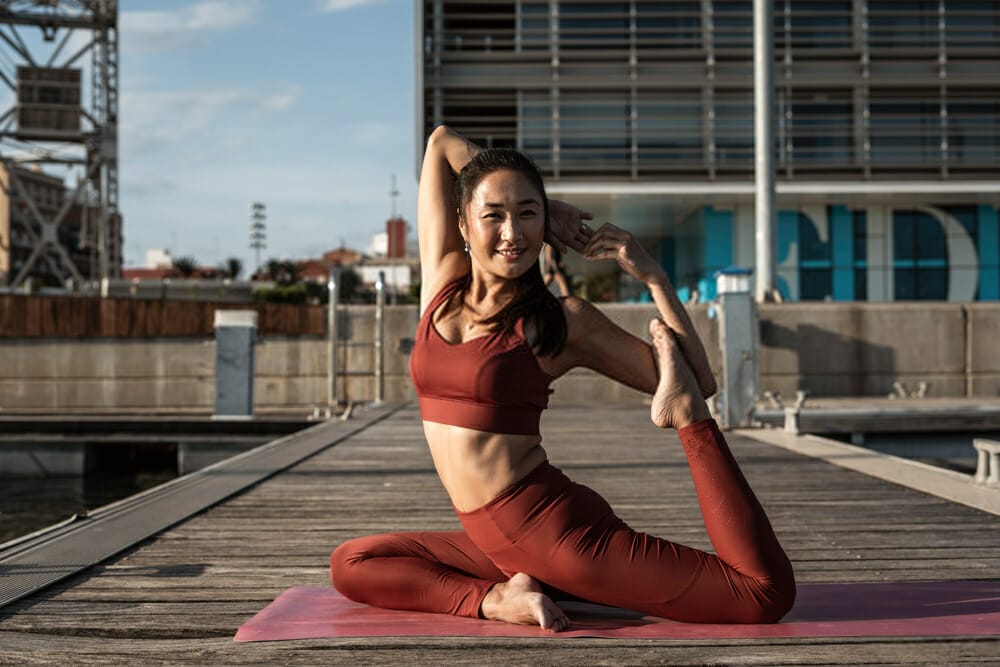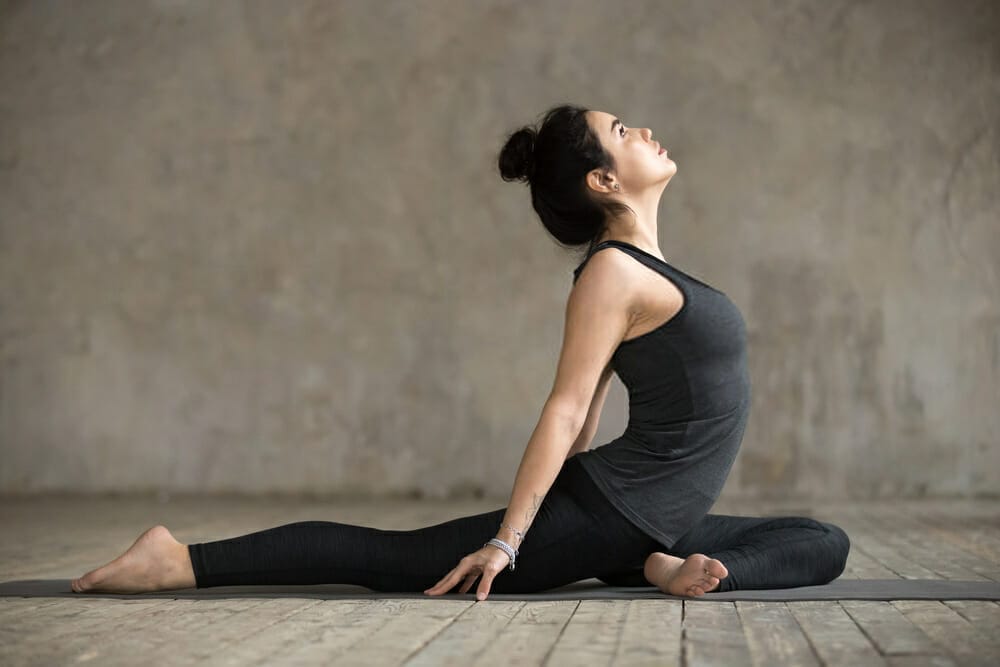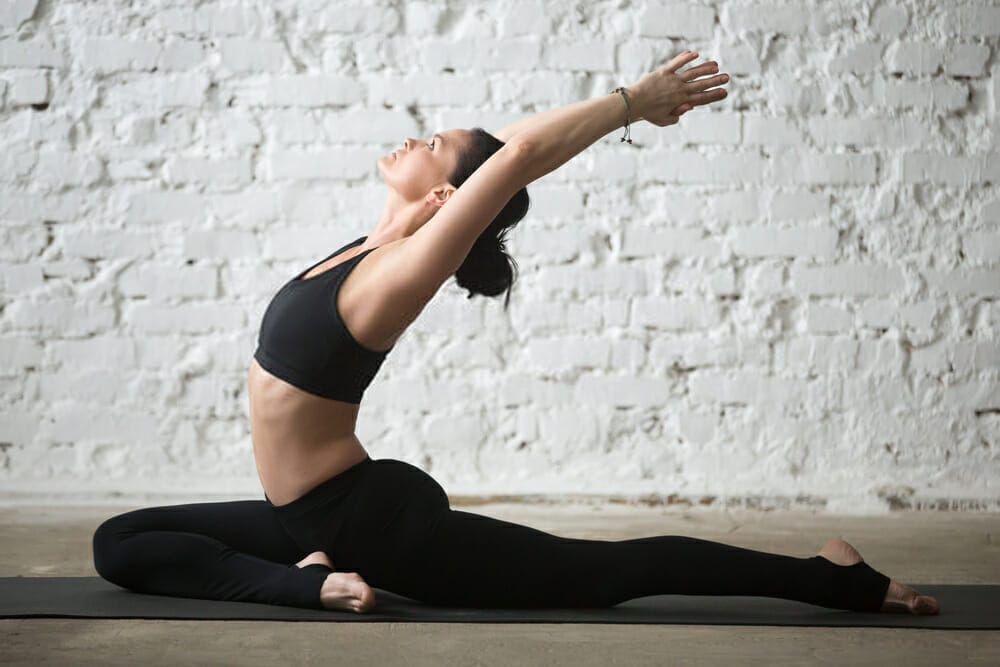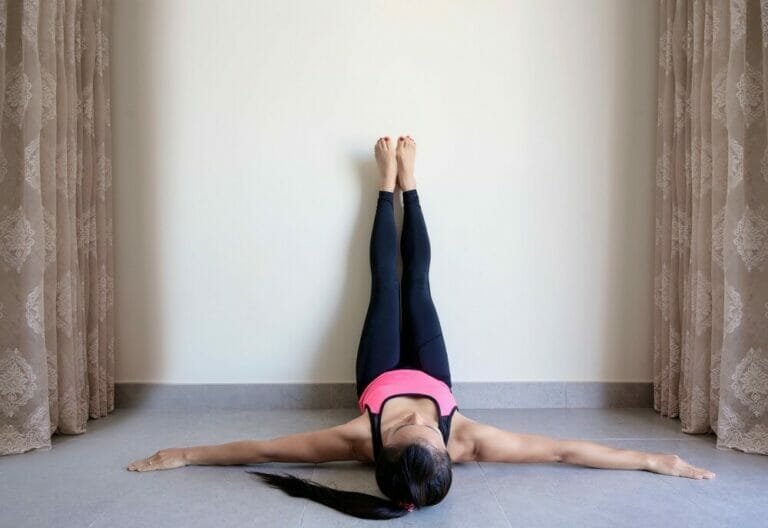Swan Pose
The swan pose is an intermediate balancing position that involves the core, glutes, calves, hands, and toes to be actively engaged.
In this stance, the body gets balanced in the prone position. It raises the difficulty level of this asana.
This asana appears to be similar to the Plank Pose but with a slight uplift from a distance. As a result, practitioners can prepare their bodies well through the plank pose, allowing them to enjoy the demands of such a lovely asana.

In Sanskrit, it is known as Hamsasana that combines 'Hamsa' and 'Asana.' However, if we go further into the name of this asana, we find another meaning. The actual words 'Ham' and 'Sa' mean 'breath' and spirit,' respectively.
The breath inspired by this asana practice wakes the spirit that has been dormant due to self-doubt and insecurity. As a result, one becomes delicious, confident, and cheerful in life.
Many yoga poses have multiple titles due to variances in their Sanskrit to English title translation or because a specific title has become famous due to its widespread use among yoga teachers and practitioners.
The following are some frequent names for the Sleeping Swan Pose:
- Kapotasana II,
- Pigeon Pose Forward Bend
- Sleeping Swan Pose
Level of Difficulty – Intermediate
The level of difficulty for this asana is intermediate. It requires a lot of core, balance, thigh, hand, and foot strength to perform this. In addition, it requires practitioners to be alert to remain relaxed and comfortable in this pose.
Risks and precautions
This asana is not meant for beginners as it requires a lot of strength to perform this. It also involves the risk of sprained ankles and joints if not performed correctly.
Therefore, you need to perform the pose with caution, mainly if performed near slippery surfaces such as tiles or marble.
Benefits of the Swan pose
There are several benefits of this asana. Some of these benefits are-

Flexibility and Strength:
Hamsasana engages the muscles of the arms, legs, hips, abdomen, and shoulders, particularly the gluteus maximus and biceps triceps.
The flexibility of these numerous muscles improves with frequent practice, as does their strength.
In addition, your wrists, forearms, shoulders, abdominal muscles, and core muscles will acquire strength and stability, preparing them for challenging poses.
Focus and Awareness:
The position of the palms with the wrists flexed causes some instability at first, with a lack of focus and balance.
However, with practice, awareness of the breath, contraction of the abdominal muscles squeezing the organs, muscular energy required, and so on, help maintain focus.
In addition, keeping one’s sight fixated on a specific location improves attention and concentration.
It will also make you more aware of your body and distribute your weight to maintain your posture while breathing fully.
Organs and Stimulation:
The pressure from the elbows against the abdominal wall, together with the body’s weight, produces pressure in this cavity.
It causes the abdominal muscles to contract and strengthen, activating the organs, particularly the stomach. Thus, in a sense, massaging and washing out all toxins, including bowel evacuation.
This massage also promotes proper blood flow to all muscles, revitalising them. The Swan Pose also improves the functioning of other internal organs such as the kidney, liver, and pancreas.
Healthy Lymph Nodes:
One of the health benefits of hamsasana is that it stretches and detoxifies the lymph nodes in the groin area of the body. Lymph nodes are an essential component of the lymphatic system, part of the immune system.
Healthy lymph nodes promote stronger immunity. Swollen lymph nodes indicate infection and can be treated holistically with the swan position.
Stimulates the Gallbladder:
The Hamsasana healthily stimulates the Gallbladder, ensuring optimal functioning. The Gallbladder is in charge of storing the fats required for digestion of the fats found in diets.
It will activate the Manipura Chakra
Swan pose’s clasped elbows support the abdomen by wrapping over the navel region, which houses the Manipura chakra.
Regular practice, combined with appropriate breathing, encourages energy flow through the subtle channel within the body. As a result, the navel chakra is activated.
What muscles are targeted?
- Core
- Gluteus maximus, gluteus medius, gluteus minimus, transversus abdominis
- Ribcage
- Trapezius
Now, let’s do the Swan Pose together!
How to do it:
- On all fours, slide your right knee forward, more or less behind your right wrist.
- Avoid putting strain on your right knee by bringing it inside or towards the edge of the mat to avoid discomfort.
- Flex your foot and place your ankle someplace in front of your left hip.
- Tuck your left toes under and slip your foot as far back as you can comfortably. Make sure your left leg is parallel to your upper torso and rests on the top of your foot with your toes tracking backwards.
- Put your weight on the middle of your hips.
- Place your arm bones on top of each other and sink your body weight.
- You want a stretch in your hips, hip flexors, and gentle stimulation of your sacral region.
- Hold the position for 1 to 3 minutes.
- Tuck your left toes under and slide your back knee forward to exit the pose.
- You can go to Down Dog before repeating on the other side.
Variations
- Try the Sleeping Swan position by lowering your elbows or resting totally over your right leg. You can hold the stance for up to 5 minutes in that variation.
- Place a bolster lengthwise to support your upper body or a block to support your head while lying down.
- Before exiting the posture, you might apply a little twist. To do so, use your hands to push the floor away from you softly. If you picked the Sleeping Swan variation, put your left hand in front of your right knee, lengthen your spine, and slowly twist over your right shoulder for a few breaths.
Tips
- Try to keep your head and neck in line with the rest of your spine.
- Bring pelvic awareness by pressing your weight into your heels and lifting out of the lower back region.
- Knees are bent, but always avoid locking them.
- Be alert to your breath and the sensations in your legs and feet.
- Breathe fully, deeply into the pose and remain relaxed.
The Swan pose is often performed after following the Sun Salutation on Hatha Yoga practitioners.
What poses should you do before and after the swan pose?
- Mayurasana: (peacock pose)
- Shavasana (Corpse Pose)
After practising hamsasana for 2-3 rounds, the best follow-up pose is mayurasana. In hamsasana, the hamstring, core, and quad muscles lift the body as the toes rest on the floor. In mayurasana, the legs get elevated, and the toes do not touch the floor.
Who should avoid doing this pose?
If the practitioner is suffering from a specific medical illness, such as heart disease, low blood pressure, or diabetes, one should be careful not to pose.

This asana is beneficial for people who have undergone knee surgeries or any other joint surgery as it helps build strength and flexibility.
The poses can be practised daily by people of any age group, but pregnant women should avoid them. Learning the proper form is crucial for safety, especially when trying out new or advanced forms of the pose.
Alternative poses
Practitioners consider many alternative poses who cannot perform this pose. For example, there is a pose named shalabhasana, which seems to resemble the characteristics of hamsasana.
The only difference between the two poses is that shalabhasana involves a lesser extension of the limbs and trunk.
There is another pose known as a bridge pose which grants the benefits obtained by the swan pose. After the swan pose, you may move on to the Dragon pose if you wish to perform the splits sequence.
Conclusion:
Hamsasana is an asana that has been practised and loved by many yoga practitioners over the years. The benefits provided by this pose are numerous, which is why many yoga sequences have included it.
Practised correctly and with dedication, the pose can strengthen the legs, core, and abdomen muscles.
One advantage is that it helps improve digestion by stimulating circulation in the abdominal region.
It also promotes flexibility in the hips and the overall flexibility of a person’s body. So, if you wish to improve your physical body, it is highly recommended that you try this asana and get the benefits it can offer.







